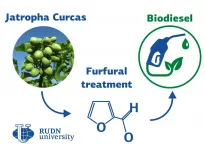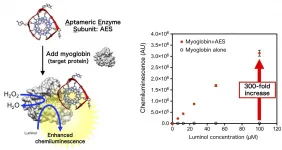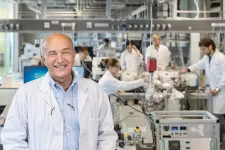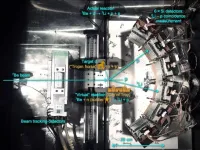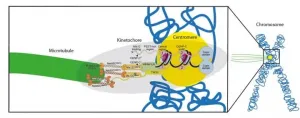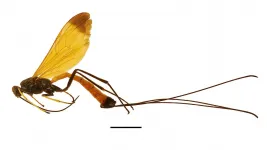From meadow to plate: The cultured meat that replaces animals with grass
An affordable lab system that uses grass blades to turn cells into cultured meat has been developed at the University of Bath in the UK
2021-07-01
(Press-News.org) An affordable lab system that uses grass blades to turn cells into cultured meat has been developed at the University of Bath in the UK.
Researchers have successfully taken grass from the university's campus and used it to create a scaffold that animal cells can attach to and grow on. The resulting tissue has the potential to be used both as lab-made meat and as human muscle tissue to repair or replace tissue which has been damaged or lost through injury or disease.
The study, by Dr Paul De Bank (Department of Pharmacy & Pharmacology), Professor Marianne Ellis (Department of Chemical Engineering) and Scott Allan (a PhD researcher in the Department of Chemical Engineering), is published in this month's Journal of Biomedical Materials Research - Part A.
The first step in the new bioengineering process involves emptying grass blades of their native cells in a process known as decellularisation. The decellularised blades are then seeded with a set of cells derived from a mouse cell line (these cells would eventually be replaced by bovine stem cells). The introduced cells stick to the scaffold's surface, multiply and form links with neighbouring cells, eventually growing as a cell mass to form new 3D tissue.
There are several challenges researchers must overcome when looking for a suitable scaffold on which to engineer new muscle tissue. First, the scaffold must be one cells can readily attach to the surface. It must then allow these cells to proliferate and align in a way that precisely mimics the fibres of the natural tissue they are replicating (with muscle fibres, for instance, all the cells need to contract and relax in tandem). Second, for scale-up, the scaffold must be cost-effective and straightforward to manufacture. For lab-grown meat, there is a third challenge: the scaffold must be edible to humans, even if not highly digestible (as is the case for grass).
The Bath project shows grass blades fulfil all criteria.
Dr Paul De Bank, who led the research, said: "When we were looking for a scaffold for our cells, we wanted to find something that was both sustainable and edible. I thought along the lines of a decellularised natural material because cellulose (which grass is largely made of) is edible, but also because grass has aligned grooves that I hoped would allow the cells to line up together to make the fibres we needed - and it worked!"
He added: "When we eat beef, we're partly eating the grass the cows have grazed on in their lifetime. What's neat about our study is that it shows that we can directly replace the animals with the grass they eat. Our system needs to be scaled up but I'm hopeful that sooner rather than later, we could have a meat product on the market based on grass."
The adhesion of the animal stem cells to the grass surface was found to be around 35%, which is considered a good result. "Often, decellularised plant scaffolds need to be chemically modified to get cells to grow on them. The great thing we've found with grass is that we get significant adhesion without further processing steps." said Dr De Bank, adding: "We are, however, hoping to find a way to increase this adhesion - we have a new PhD student who will be working on this, exploring ways to optimise cell attachment and growth.
The next big challenge will be scaling up this process to generate sufficient quantities of both cells and scaffold material in order to produce a significant quantity of muscle tissue. If this is successful then - one day - consumers may be able to buy grass-reared meat with a clear conscience, free from the environmental and animal-welfare concerns many are wrestling with today.
INFORMATION:
[Attachments] See images for this press release:
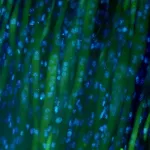
ELSE PRESS RELEASES FROM THIS DATE:
2021-07-01
RUDN University chemists have proposed a new method of producing fuel from Jatropha Curcas, a poisonous tropical plant. Natural minerals and a non-toxic additive from vegetable raw materials are used for that. The reaction efficiency is 85%. The fuel can be used in diesel internal combustion engines. The results are published in the International Journal of Green Energy.
Jatropha Curcas is a common plant in many tropical regions. Its seeds contain lots of oil, but they cannot be used agriculture because the oil contains toxins that are dangerous for people and animals. But the composition of jatropha oil is suitable for the manufacture of biodiesel. One of challenge of the processing the plant raw materials is to select sufficiently ...
2021-07-01
PROVIDENCE, R.I. [Brown University] -- Researchers from Brown University and MIT have developed a new data science framework that allows users to process data with the programming language Python -- without paying the "performance tax" normally associated with a user-friendly language.
The new framework, called Tuplex, is able to process data queries written in Python up to 90 times faster than industry-standard data systems like Apache Spark or Dask. The research team unveiled the system in research presented at SIGMOD 2021, a premier data processing conference, and have made the software freely available to all.
"Python is the primary programming language used by people doing data science," said Malte Schwarzkopf, an assistant professor of computer ...
2021-07-01
A collaboration led by Distinguished Professor Dr. Kazunori Ikebukuro from Tokyo University of Agriculture and Technology (TUAT), Japan, discovered that G-quadruplex (G4)-forming DNA binds myoglobin through a parallel-type G4 structure. Through the G4 binding, the enzymatic activity of myoglobin increases over 300-fold compared to that of myoglobin alone (Figure). This finding indicates that DNA may work as a carrier of genetic information in living organisms and act as a regulator of unknown biological phenomena.
"Aptamers" are nucleic acid-based synthetic ligands that can be used against many target molecules with high affinity and specificity. Some aptamers that bind to proteins ...
2021-07-01
Zeolites are extremely porous materials: Ten grams can have an internal surface area the size of a soccer field. Their cavities make them useful in catalyzing chemical reactions and thus saving energy. An international research team has now made new findings regarding the role of water molecules in these processes. One important application is the conversion of biomass into biofuel.
Fuel made from biomass is considered to be climate-neutral, although energy is still needed to produce it: The desired chemical reactions require high levels of temperature and pressure.
"If ...
2021-07-01
WASHINGTON -- If you've ever tried to capture a sunset with your smartphone, you know that the colors don't always match what you see in real life. Researchers are coming closer to solving this problem with a new set of algorithms that make it possible to record and display color in digital images in a much more realistic fashion.
"When we see a beautiful scene, we want to record it and share it with others," said Min Qiu, leader of the Laboratory of Photonics and Instrumentation for Nano Technology (PAINT) at Westlake University in China. "But we don't want to see a digital photo or video with the wrong colors. Our new algorithms can help digital camera and electronic display developers better adapt their ...
2021-07-01
There is a significant discrepancy between theoretical and observed amounts of lithium in our universe. This is known as the cosmological lithium problem, and it has plagued cosmologists for decades. Now, researchers have reduced this discrepancy by around 10%, thanks to a new experiment on the nuclear processes responsible for the creation of lithium. This research could point the way to a more complete understanding of the early universe.
There is a famous saying that, "In theory, theory and practice are the same. In practice, they are not." This holds true in every academic domain, but it's especially common in cosmology, the study of the entire ...
2021-07-01
A wonder of nature
As a human cell begins division, its 23 chromosomes duplicate into identical copies that remain joined at a region called the centromere. Here lies the kinetochore, a complicated assembly of proteins that binds to thread-like structures, the microtubules. As mitosis progresses, the kinetochore gives green light to the microtubules to tear the DNA copies apart, towards the new forming cells. "The kinetochore is a beautiful, flawless machine: You almost never lose a chromosome in a normal cell!", says Musacchio. "We already know the proteins that constitute it, yet important questions about how the kinetochore works are still open: How does it rebuild itself during chromosome replication? ...
2021-07-01
Researchers at the Biodiversity Unit of the University of Turku, Finland, study insect biodiversity particularly in Amazonia and Africa. In their studies, they have discovered hundreds of species previously unknown to science. Many of them are exciting in their size, appearance, or living habits.
"The species we have discovered show what magnificent surprises the Earth's rainforests can contain. The newly discovered Dolichomitus meii wasp is particularly interesting for its large size and unique colouring. With a quick glance, its body looks black but glitters electric blue in light. Moreover, its wings are golden yellow. Therefore, you could say it's like a flying jewel," says Postdoctoral Researcher Diego Pádua from the Instituto Nacional ...
2021-07-01
Contrary to what science once suggested, older people with a declining sense of smell do not have comprehensively dampened olfactory ability for odors in general - it simply depends upon the type of odor. Researchers at the University of Copenhagen reached this conclusion after examining a large group of older Danes' and their intensity perception of common food odours.
That grandpa and grandma aren't as good at smelling as they once were, is something that many can relate to. And, it has also been scientifically demonstrated. One's sense of smell gradually begins to decline from about the age of 55. Until now, it was believed that one's sense of smell broadly ...
2021-07-01
Plastic waste is considered one of the biggest environmental problems of our time. IASS researchers surveyed consumers in Germany about their use of plastic packaging. Their research reveals that fundamental changes in infrastructures and lifestyles, as well as cultural and economic transformation processes, are needed to make zero-waste shopping the norm.
96 percent of the German population consider it important to reduce packaging waste. Nevertheless, the private end consumption of packaging in Germany has increased continuously since 2009. At 3.2 million tons in 2018, the amount of plastic packaging waste generated by end consumers in Germany ...
LAST 30 PRESS RELEASES:
[Press-News.org] From meadow to plate: The cultured meat that replaces animals with grass
An affordable lab system that uses grass blades to turn cells into cultured meat has been developed at the University of Bath in the UK

